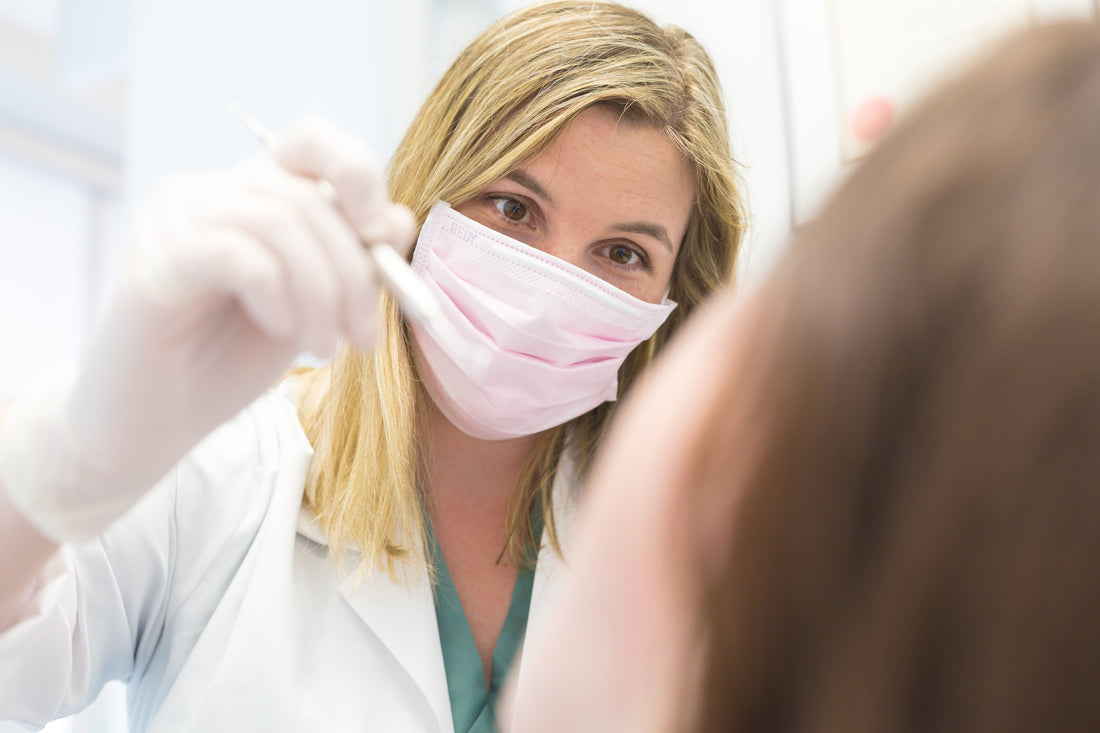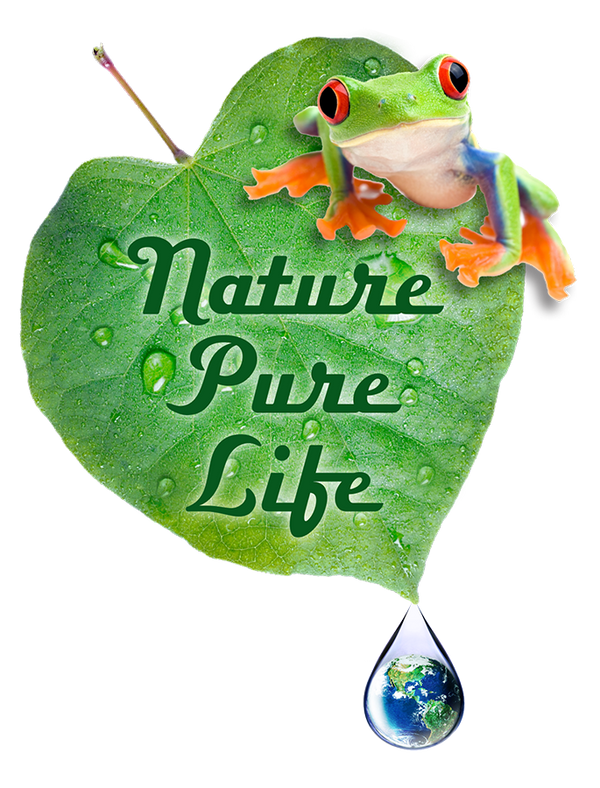
LichensEze For Oral Lichen Planus: Natural Relief and Usage Guide
Share
Oral lichen planus affects millions worldwide. It causes painful white patches, burning sensations, and a lot of discomfort in the mouth.
While doctors often prescribe corticosteroids and other medications, these treatments sometimes bring unwanted side effects. More and more people are looking for gentler ways to manage this stubborn, chronic condition.
 LichensEze from Nature Pure Life takes a natural approach to managing oral lichen planus symptoms. It uses plant-based ingredients designed to support healing and calm inflammation.
LichensEze from Nature Pure Life takes a natural approach to managing oral lichen planus symptoms. It uses plant-based ingredients designed to support healing and calm inflammation.
This botanical formula gives people another option if they want to avoid the long-term risks of conventional treatments. It might also appeal to those who just haven't found much relief with standard medications.
Knowing your treatment options really matters when you have oral lichen planus. This condition can seriously impact your quality of life, and natural remedies like LichensEze could offer relief while supporting your body in a gentler way.
Key Takeaways
- Oral lichen planus is a chronic inflammatory condition that causes painful mouth symptoms and needs ongoing management.
- LichensEze offers a natural, plant-based alternative to conventional treatments for oral lichen planus relief.
- Understanding both traditional and natural treatment options helps you make informed choices about your care.
Understanding Oral Lichen Planus

Oral lichen planus is a chronic inflammatory condition that targets the mouth's mucous membranes. The immune system gets confused and attacks healthy tissue, leading to trouble.
This disease creates distinctive white patches and lesions. Proper diagnosis usually means a clinical exam and sometimes a biopsy. We recommend always getting a biopsy because we have heard thousands of horror stories from people misdiagnosed- sometimes for decades!
Definition and Clinical Features
Oral lichen planus (OLP) is a chronic mucocutaneous disorder that affects the stratified squamous epithelium in your mouth. It's basically the oral version of lichen planus, which can also show up on your skin, scalp, nails, or even genital areas.
The disease affects 0.5% to 2.0% of people. It's most common in adults between 30 and 60.
Clinical manifestations include:
- White lacy patches on your tongue, gums, or cheek lining
- Red, swollen tissues in affected areas
- Open sores that may be painful
- Burning or tingling sensations
Several types of lichen planus affect the mouth. The reticular type appears as white patches, while erosive forms create painful ulcers.
Key immune processes include:
- Cytotoxic T cell activation
- Mast cell degranulation
- Matrix metalloproteinase activation
- Inflammatory cytokine release
This immune overactivity creates constant inflammation. That’s what leads to the tissue damage and those unmistakable white patches.
Diagnosis and Biopsy
Diagnosing oral lichen planus takes a careful eye. A healthcare professional checks your mouth for white patches and examines the pattern of lesions.
Often, your doctor will recommend a biopsy. They'll remove a tiny tissue sample from the affected area and send it for microscopic examination to look for specific cellular changes. If your doctor does not offer you a biopsy, ask for one! You are the one paying the doctor!
Diagnostic criteria include:
- Clinical appearance of white striped patterns
- Histopathological findings showing inflammatory changes
- Absence of other conditions that mimic lichen planus
Sometimes, blood tests help rule out things like hepatitis C. Your doctor might also check for autoimmune markers that often show up with oral lichen planus.
Common Symptoms
Oral lichen planus symptoms vary a lot from person to person. Some people barely notice anything, while others have pain that makes eating or even talking a challenge.
Primary symptoms include:
- Burning sensation in your mouth
- Pain when eating spicy or acidic foods
- Difficulty swallowing
- Metallic taste
- Dry mouth
The erosive form usually hurts more than the reticular type. You might notice symptoms get worse during stressful times or when you’re sick. Certain foods and drinks can also make things flare up.
Symptoms sometimes go away for a bit and then come back. Unfortunately, for many, this condition sticks around for months or years.
LichensEze: Natural Approach to Oral Lichen Planus Care

LichensEze offers a plant-based option instead of traditional steroid treatments for oral lichen planus. Its botanical ingredients aim to calm inflammation and discomfort, all without the risks linked to long-term steroid use.
Botanical Ingredients and Formulation
Nature Pure Life created LichensEze as a steroid-free, all-natural solution for Oral Lichen Planus. There are no steroids, chemicals, or synthetic dyes in the mix.
It comes in a "duo" a mouthwash solution and a spray application.
The all natural duo skips steroids, chemicals, dyes, and other stuff you just don't want. The botanical blend helps ease burning, itching, and mouth lesions.
The spray fits right in your purse or pocket, which is handy for symptom relief on the go.
How LichensEze Works
LichensEze targets inflammation and discomfort with its natural ingredients. It helps with burning, itching, and irritation from lesions.
The mouthwash solution coats affected areas for longer relief. The spray lets you focus directly on trouble spots.
Some users say they notice better moisture and less stinging, especially at the tongue tip. One person shared that the stinging at the tip of the tongue pretty much disappeared after three weeks.
Because it's natural, you don't have to worry about steroid side effects. That makes it a good fit for long-term symptom control.
Comparison to Topical Corticosteroids
Doctors usually recommend topical corticosteroids for oral lichen planus. Steroids remain the standard care for OLP.
But steroids can cause problems if you use them for too long. Side effects might include oral thrush, thinning tissues, and even concerns about absorption into your system.
LichensEze skips those complications. Its natural ingredients work to reduce inflammation without the risks that come with corticosteroids.
Some folks say that nothing prescribed by doctors helped and sometimes made it worse. For them, natural options like LichensEze might be worth a try.
With the botanical approach, you can use it daily without the close monitoring steroids often require.
Integration With Broader Lichen Planus Care
LichensEze fits nicely into a bigger plan for managing oral lichen planus. You can use it along with stress reduction, dietary changes, and regular dental visits.
Reducing stress really matters, since stress can trigger flare-ups. The gentle, natural formula helps ease symptoms while you tackle stress and other triggers.
If you have erosive lichen planus, the botanical ingredients offer comfort without irritating already damaged tissue. No harsh chemicals or astringents means it's gentle enough for sensitive mouths.
Keep up with dental checkups and oral cancer screenings while using LichensEze. Lichen planus can sometimes lead to oral cancer, so regular monitoring is crucial.
This natural approach works well with other lifestyle changes that support your oral health and immune system.
Frequently Asked Questions
LichensEze provides a natural way to manage oral lichen planus symptoms without steroids. Exploring your treatment options, making lifestyle tweaks, and staying aware of possible complications all help you take charge of your oral health.
Does LichensEze provide relief for oral lichen planus lesions?
LichensEze is marketed as a steroid-free, all-natural solution for relieving symptoms of oral lichen planus. The company says it soothes burning, itching, and mouth lesions using natural ingredients.
Customer reviews: One person said, "soothed my mouth right away" during a stubborn flare-up when nothing else worked.
Another user noticed improvements after about three weeks. They mentioned their mouth felt more moist and the stinging at the tip of their tongue eased up.
Results seem to vary a lot, but most people report some relief!
What dietary and lifestyle changes can help alleviate oral lichen planus discomfort?
Staying away from trigger foods might help calm down flare-ups. Spicy foods, citrus, tomatoes, and acidic drinks are common troublemakers.
Good oral hygiene goes a long way in preventing extra infections. Try using a soft-bristled toothbrush and skip the alcohol-based mouthwashes to avoid more irritation.
Managing stress makes a difference for some folks. Chronic stress can really ramp up autoimmune issues like oral lichen planus.
If you smoke, quitting could help. Alcohol can also irritate your mouth and make lesions worse, so it's worth cutting back if you can.
Drink plenty of water throughout the day. A dry mouth just adds to the discomfort and can slow down healing.
Are there any new advancements in the treatment of oral lichen planus?
Most treatments aim to manage symptoms, not cure the condition. Oral lichen planus is a chronic disease that may be controlled but not eliminated.
Doctors still usually reach for topical steroids to calm inflammation and help with flare-ups. They tend to provide the most reliable relief for most people.
Natural alternatives like LichensEze are out there for anyone who's worried about using steroids long-term. Some folks prefer trying those first, and honestly, who can blame them?
Researchers are digging into the T-cell inflammatory processes behind this disease. Maybe one day, we'll see more targeted therapies—here's hoping.
How does one differentiate between oral lichen planus and other similar mouth ulcers?
Oral lichen planus usually shows up as white, lacy patches inside your cheeks or on your tongue. That reticular pattern is a bit of a giveaway if you know what to look for.
The erosive type is a lot more painful, creating red spots and ulcers that really sting. It's not subtle, unfortunately.
If you're unsure, a healthcare professional can do a biopsy for a clear answer. Just looking isn't always enough to tell these conditions apart.
Canker sores tend to heal up in a week or two. Oral lichen planus lesions stick around for months or even years.
There's also a difference in where the sores show up. Oral lichen planus usually affects both sides of the mouth in a pretty symmetrical way.
Can oral lichen planus lead to severe health complications if left untreated?
In rare cases, oral lichen planus can increase the risk of oral cancer. It's honestly a little unsettling, but regular checkups help catch any problems early.
Long-term treatment and regular cancer screening are recommended. Your healthcare provider will figure out what kind of follow-up schedule makes sense for you.
The condition can really affect your quality of life. Chronic pain and trouble eating sometimes make it tough to get proper nutrition.
Sometimes, eroded areas in your mouth develop secondary infections. Keeping up with oral hygiene and getting prompt treatment lowers the risk of these problems.
Most people go through cycles of flare-ups and remission. Symptoms can hang around for months or even years.

